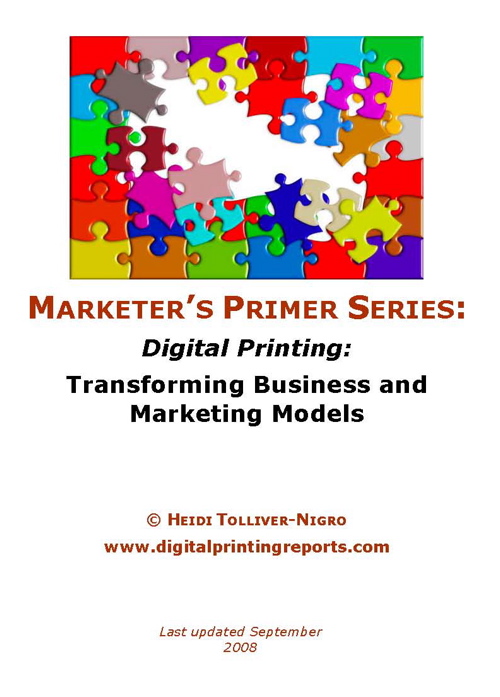I’ve been covering the greening of print marketing for a long time. I just updated my report “Greening Print Marketing: A Practical Guide,” and here is what really struck me as I was doing so:
- How critical it is to understand product lifecycles if you really want to do a credible environmental footprint analysis
- How expensive, time-consuming, and incomplete true lifecycle analysis can be, leaving the results to be highly subjective and unreliable
It feels great to act as if we all know what we’re talking about, but the fact is, true lifecycle analysis involves so many moving parts. Many of these we can analyze with a fair level of completeness. Many of these we cannot. Consequently, the results are approximate at best.
If a business wants to reduce its environmental footprint from its marketing, if you go down the environmental footprint route, you’re less likely to end up with certainty and action and more likely to end up in paralysis and inaction.
Fortunately, there is another way to go about it. Here are some best practices from “Greening Print Marketing” that calm the debate and hopefully make some practical sense:
1. Minimize waste in your design.
Whether it’s optimizing the size of the postcard, menu, or marketing collateral to fit more on a sheet or thinking about how zippers, flaps, and glue seals will affect recyclability, start “greening” from the design stage. Design with the end in mind.
2. Choose environmentally certified substrates.
Specifying certified wood, lumber, and paper products ensures that, regardless of the environmental footprint debate, the fiber was harvested sustainably using best forestry practices and with minimum impact on indigenous populations.
3. Keep your print and email databases up to date.
There is nothing green about sending print — or email — to addresess that have changed or don’t exist. Keep your email and print databases up to date.
4. When possible, use just in time and targeted communications.
Target your communications. Whether it’s print or email, move from “spray and pray” marketing to targeted, relevance-based marketing. You’ll get a better response and you’ll keep your volume to what’s relevant and necessary. For example, colleges and universities are moving to sending out personalized booklets rather than large, undifferentiated coursebooks. By sending only information relevant to potential students, they make the communication more relevant, increase their enrollment rates, and reduce their environmental footprints at the same time — slimmer books mean lower footprint for printing, mailing, and distribution and less solid waste going into the landfill.
So forget the debate over print vs. email or any other medium. All media have environmental footprints, and the deeper you look, the less clear cut the environmental footprint issues are. So whatever media you use, just use them responsibly.










You make some good points. However, while full-blown process Lifecycle Analysis can be expensive, time consuming and complex, it is also possible to employ Economic Input-Output Lifecycle Analysis and hybrid LCAs to maximize environmental benefits while minimizing cost, complexity and time to market in the greening of media. Also, while use of green rules of thumb and generalized sustainability heuristics are better than business as usual or analysis paralysis, it is always considered a best practice to seek continuous improvement through measurement of key impacts and to strive for zero waste.
Hi, Don. You are the expert in this area to be sure, but as you know, following the 80/20 rule, most companies won’t even understand what you wrote, let alone be able to implement it! I think the average small business gets lost in the green discussions (hence why I focus on them). Sure, large corporations are hugely important, but how much environmental impact is the aggregate volume of small businesses? We need more discussions relevant to them. Don’t you think?